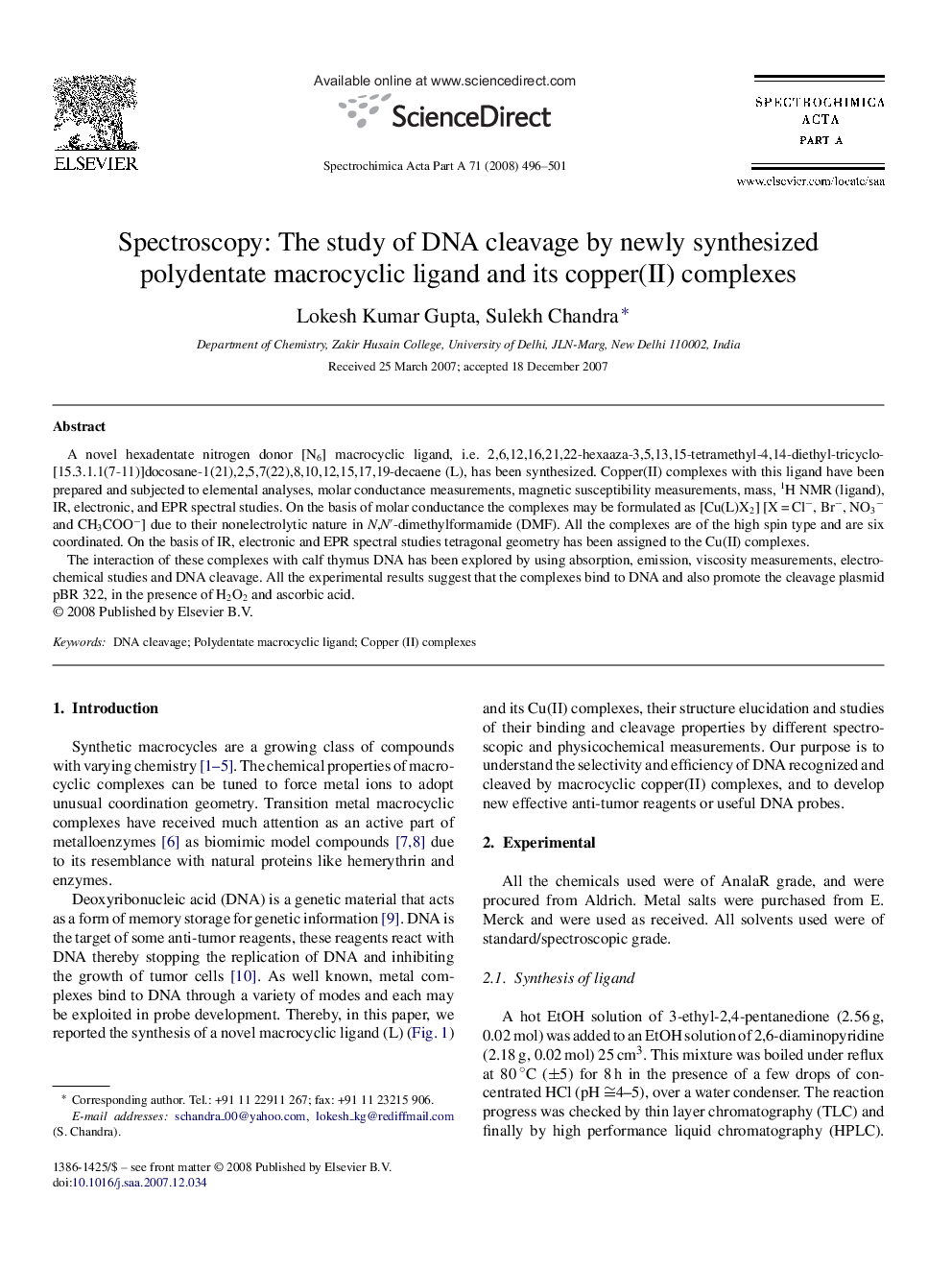| Article ID | Journal | Published Year | Pages | File Type |
|---|---|---|---|---|
| 1238139 | Spectrochimica Acta Part A: Molecular and Biomolecular Spectroscopy | 2008 | 6 Pages |
A novel hexadentate nitrogen donor [N6] macrocyclic ligand, i.e. 2,6,12,16,21,22-hexaaza-3,5,13,15-tetramethyl-4,14-diethyl-tricyclo-[15.3.1.1(7-11)]docosane-1(21),2,5,7(22),8,10,12,15,17,19-decaene (L), has been synthesized. Copper(II) complexes with this ligand have been prepared and subjected to elemental analyses, molar conductance measurements, magnetic susceptibility measurements, mass, 1H NMR (ligand), IR, electronic, and EPR spectral studies. On the basis of molar conductance the complexes may be formulated as [Cu(L)X2] [X = Cl−, Br−, NO3− and CH3COO−] due to their nonelectrolytic nature in N,N′-dimethylformamide (DMF). All the complexes are of the high spin type and are six coordinated. On the basis of IR, electronic and EPR spectral studies tetragonal geometry has been assigned to the Cu(II) complexes.The interaction of these complexes with calf thymus DNA has been explored by using absorption, emission, viscosity measurements, electrochemical studies and DNA cleavage. All the experimental results suggest that the complexes bind to DNA and also promote the cleavage plasmid pBR 322, in the presence of H2O2 and ascorbic acid.
